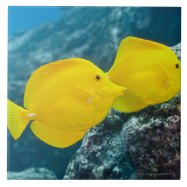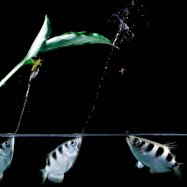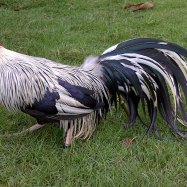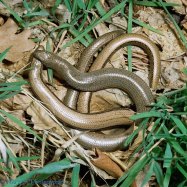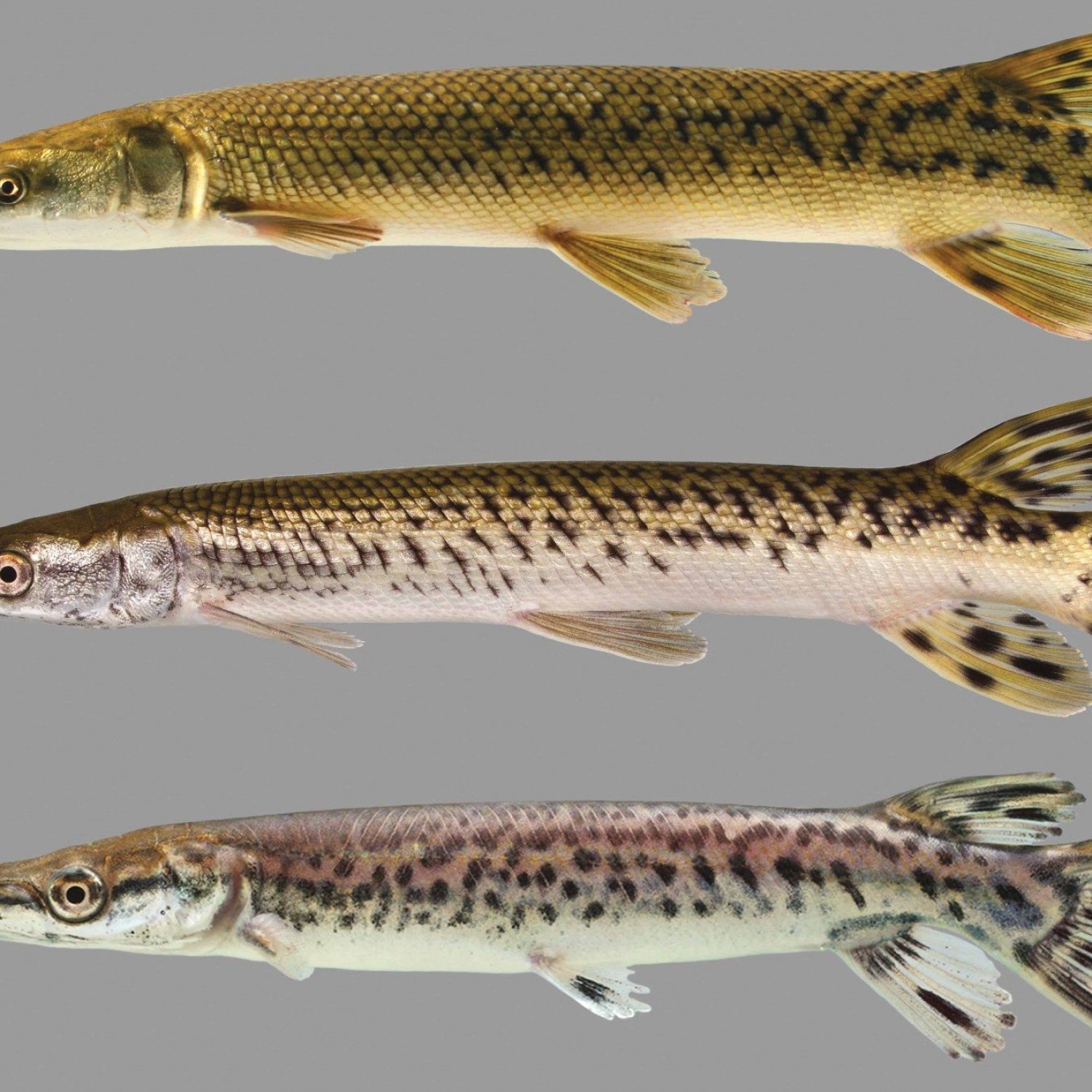
Florida Gar
Up to 4.5 feet
Did you know? The Florida Gar, found in the southeastern United States, can grow up to 4.5 feet in length and belongs to the Lepisosteidae family. Its unique elongated and cylindrical body shape helps it glide through the waters of Florida, Georgia, and South Carolina. #FloridaGar #SoutheasternSpecies
Animal Details Summary:
Common Name: Florida Gar
Kingdom: Animalia
Habitat: Freshwater rivers, lakes, and marshes
The Elusive and Fascinating Florida Gar: A Master Predator of Southern Waters
The Florida Gar, or Lepisosteus platyrhincus in scientific terms, is a fascinating yet elusive animal that inhabits the waters of the southeastern United States. This unique and ancient fish is a member of the Lepisosteidae family, commonly known as Gars. With its elongated and cylindrical body shape, dark olive-green or brown coloration, and impressive size of up to 4.5 feet, the Florida Gar is a sight to behold Florida Gar.While it may not attract as much attention as other aquatic creatures, the Florida Gar holds immense significance in the ecosystem of freshwater rivers, lakes, and marshes of Florida, Georgia, and South Carolina. In this article, we will delve deep into the life and characteristics of this astonishing animal, uncovering its fascinating habits and adaptations that make it a master predator in its habitat.
Before we begin exploring its remarkable features, let us first understand the scientific classification of the Florida Gar. It falls under the Kingdom Animalia, Phylum Chordata, Class Actinopterygii, and Order Lepisosteiformes. Its scientific name Lepisosteus platyrhincus translates to "bony-scaled nose" in Greek, which perfectly describes its physical appearance.
Ancient and Unique
The Florida Gar is considered a living fossil, with a history dating back over 100 million years. Its elongated body, long snout, and sharp fins are all features that have remained unchanged over millions of years, making it one of the oldest surviving fish species. Not only that, but it is also the largest species in its family, growing much larger than its relatives, such as the Shortnose Gar and the Longnose Gar.This ancient and unique creature is not only remarkable for its age and size but also for its distinctive physical characteristics Fluke Fish. Its elongated and cylindrical body is covered in hard, diamond-shaped scales that have a stunning green or brown coloration. These scales not only provide a protective armor for the Gar but also play a vital role in camouflage, making it difficult to spot in murky waters.
A Formidable Predator
One of the most striking features of the Florida Gar is its long snout, lined with needle-sharp teeth. This is a powerful weapon in its arsenal, specially adapted for its predatory nature. The Gar is an apex predator, meaning it has no natural predators in its habitat. Its diet mainly consists of small fish, crustaceans, and even small birds, which it easily catches with its sharp teeth and fast swimming speed.The Florida Gar's hunting technique is also unique and well-suited for its habitat. It is a freshwater species, which means it has to constantly adapt to changing water levels, temperatures, and currents. Instead of swimming, the Gar uses its long snout to glide through the water, conserving energy and making it quicker and stealthier when attacking its prey. Scientists have also observed that the Gar can lift its snout out of the water to swallow prey whole, making it a formidable predator that is difficult to outsmart.
Adapted for Life in Southern Waters
One reason why the Florida Gar has stood the test of time is its ability to adapt to the ever-changing conditions of its habitat. It has evolved to thrive in the warm, shallow waters of the southeastern United States, where other species may struggle to survive. The Gar has a special swim bladder, which allows it to regulate its buoyancy and stay afloat in shallow waters. This unique adaptation also helps it maintain its slow and steady glide, making it a stealthier hunter.Another remarkable adaptation of the Florida Gar is its ability to breathe both in water and air. While it is a water-dwelling creature, it can survive in low-oxygen levels and even shallow water by breathing through its swim bladder. This allows it to explore and inhabit areas that other fish cannot, giving it an advantage in catching prey and avoiding predators.
A Natural Wonder for Anglers
With its ancient history, impressive size, and unique adaptations, the Florida Gar has attracted the attention of not only scientists but also anglers and recreational fishers. Its elusive nature and challenging hunting techniques make it a highly sought-after catch for many fishing enthusiasts.In Florida and other southern states, the Gar is often not considered a game fish and is therefore not subject to fishing regulations. However, this has led to overfishing in some areas, threatening the Gar's population in its natural habitat. To protect this valuable species, some states have implemented catch and release policies, encouraging anglers to admire and appreciate the Gar's beauty without harming their population.
A Bright Future
Despite facing challenges such as overfishing and habitat destruction, the Florida Gar has shown resilience and adaptability, making it a promising species for the future. Conservation efforts and awareness about its role in the ecosystem have helped in protecting this ancient and unique creature, ensuring its survival for generations to come.The Florida Gar may not be the most commonly talked about animal, but it holds great significance in the world of aquatic creatures. Its ancient lineage, impressive size, and unique adaptations make it a natural wonder that captivates the imagination of those who encounter it. The next time you come across this elusive creature swimming stealthily in the southern waters, take a moment to appreciate its remarkable features and remember its vital role in our ecosystem.
Conclusion
The Florida Gar, or Lepisosteus platyrhincus in scientific terms, may not be the most well-known animal, but it is undoubtedly one of the most fascinating creatures that inhabit the freshwater bodies of the southeastern United States. Its ancient lineage, unique adaptations, and impressive predatory skills make it a master of its habitat, and a natural wonder that never fails to captivate the imagination.From its diamond-shaped scales to its long, sharp snout, every physical feature of the Gar is specially adapted to thrive in its warm, shallow, and ever-changing environment. As we continue to learn more about this ancient species, it is essential to remember its vital role in the ecosystem and work towards protecting its habitat for future generations to appreciate and admire.

Florida Gar
Animal Details Florida Gar - Scientific Name: Lepisosteus platyrhincus
- Category: Animals F
- Scientific Name: Lepisosteus platyrhincus
- Common Name: Florida Gar
- Kingdom: Animalia
- Phylum: Chordata
- Class: Actinopterygii
- Order: Lepisosteiformes
- Family: Lepisosteidae
- Habitat: Freshwater rivers, lakes, and marshes
- Feeding Method: Predatory
- Geographical Distribution: Southeastern United States
- Country of Origin: United States
- Location: Florida, Georgia, and South Carolina
- Animal Coloration: Dark olive-green or brown
- Body Shape: Elongated and cylindrical
- Length: Up to 4.5 feet
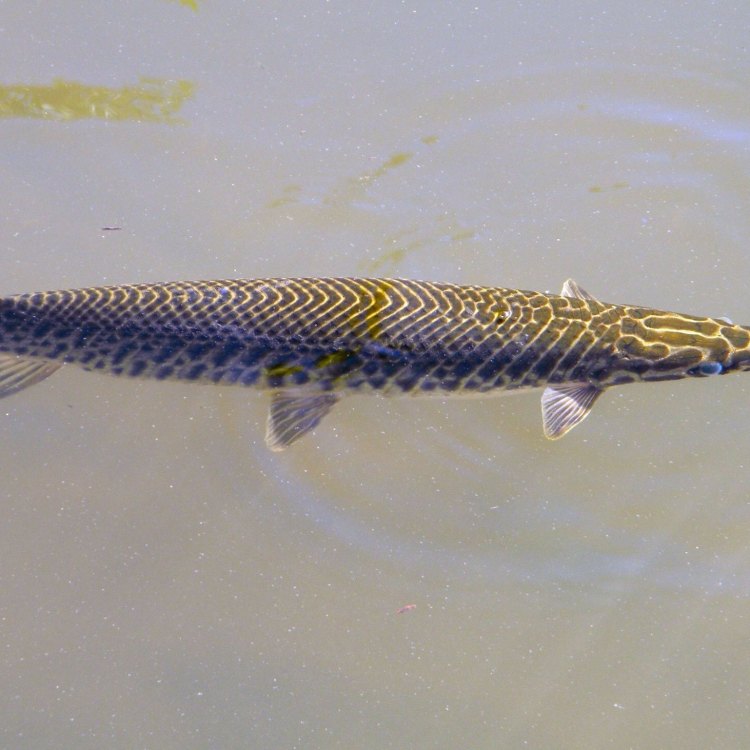
Florida Gar
- Adult Size: Up to 4.5 feet
- Average Lifespan: 20-30 years
- Reproduction: Oviparous (lays eggs)
- Reproductive Behavior: Spawning
- Sound or Call: No specific sound or call
- Migration Pattern: No long-distance migration
- Social Groups: Solitary
- Behavior: Predatory and opportunistic
- Threats: Habitat degradation, overfishing
- Conservation Status: Least Concern
- Impact on Ecosystem: Top predator
- Human Use: Sport fishing, aquarium trade
- Distinctive Features: Long snout, sharp teeth, ganoid scales
- Interesting Facts: Florida Gars have the ability to breathe air using a specialized swim bladder
- Predator: No natural predators
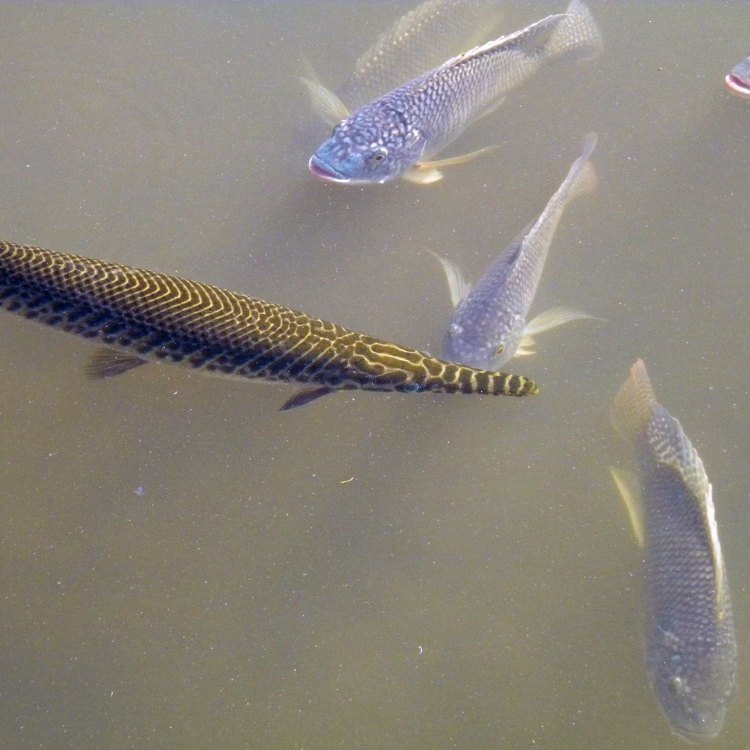
Lepisosteus platyrhincus
Bring on the Big, Bold Florida Gar: The Top Predator of Florida's Ecosystem
Deep within the murky, swampy waters of Florida, lurks a fish that can easily strike fear into the hearts of its prey and awe into the minds of those who encounter it. The Florida Gar (Lepisosteus platyrhincus) stands tall as a powerful and commanding creature in the state's intricate ecosystem.At first glance, the Florida Gar may appear to be just another fish with a long snout and sharp teeth. But upon closer inspection, one can't help but be captivated by its unique and distinctive features PeaceOfAnimals.Com. With up to 4.5 feet in length and an average lifespan of 20-30 years, this species is a force to be reckoned with in its environment.
Let's dive deeper into the world of the Florida Gar and uncover what makes it such a fascinating and essential part of Florida's ecosystem.
Size and Reproduction:
With an average size of 2-3 feet, Florida Gars can reach lengths of up to 4.5 feet, making them one of the largest freshwater fish in North America. This size is especially impressive when considering that they are not known for long-distance migration, and thus, do not have access to larger bodies of water to grow in.
Florida Gars are oviparous, meaning they lay eggs. These eggs are laid in shallow waters during the spring months and are guarded by the males until they hatch. A single female can produce anywhere from 10,000 to 30,000 eggs, ensuring the survival of their species Feather Star.
Reproductive Behavior:
The reproductive behavior of Florida Gars is quite fascinating. During the spawning season, which occurs between April and May, the males create nest sites by digging shallow depressions in the muddy river or lake bottoms. These nests can be as shallow as 6 inches to up to 4 feet deep.
Once the nest is ready, the males attract females by producing a pheromone that they release into the water. Female Gars are known to have a keen sense of smell, and they can detect this pheromone from a distance, making their way to the male's nest.
Once the female lays her eggs in the male's nest, he then releases his sperm, fertilizing the eggs. The male then guards the nest until the eggs hatch four to five days later.
Interesting Fact: Florida Gars have an unusual spawning pattern, with males spawning every year and females only every other year. This reproductive behavior ensures the sustainability of their population.
Behavior and Predator:
As top predators, Florida Gars are opportunistic and predatory in their behavior. They have a keen sense of sight and can detect movement from a distance, making them excellent hunters. Their sharp teeth allow them to catch and consume a variety of prey, including fish, frogs, and crustaceans.
But what sets them apart from other freshwater fish is their ability to breathe air. Florida Gars have a specialized swim bladder that acts as a lung, allowing them to take in oxygen from the air. This unique adaptation allows them to survive in waters where oxygen levels may be low or depleted, making them resilient and adaptable creatures.
Distinctive Features:
One cannot help but be mesmerized by the unique and distinctive features of the Florida Gar. They have a long, slender body with a long snout filled with sharp teeth. Their body is covered with hard, interlocking ganoid scales, which are known for their armor-like quality.
Their long snout and sharp teeth are specifically designed for catching prey, and their ganoid scales help protect them from any potential predators. These features also give them a prehistoric and intimidating appearance, making them stand out among other fish species.
Impact on Ecosystem:
As a top predator, Florida Gars play a crucial role in the balance of their ecosystem. By keeping the population of their prey in check, they prevent overpopulation, leading to a more diverse and healthy ecosystem. They also help control the spread of invasive species that can harm the native habitat.
Unfortunately, due to habitat degradation and overfishing, Florida Gars are facing threats to their population. Habitat degradation, such as the destruction of their nesting sites, can disrupt their breeding patterns, leading to a decline in their population.
Human Use:
While Florida Gars are an essential species in their ecosystem, they also hold value to humans. They are used in the aquarium trade, and their unique appearance makes them an attractive addition to large home aquariums. However, they are not easy to maintain in captivity, and proper care and knowledge are required for their survival.
Additionally, Florida Gars are also a popular sport fish in the state. They provide an exciting challenge for anglers and are known for their strong fighting abilities. As these fish do not reproduce quickly, proper regulations and conservation efforts are necessary to ensure their sustainable use.
Conservation Status:
Despite facing threats to their population, Florida Gars are currently listed as Least Concern by the International Union for Conservation of Nature (IUCN). This listing is primarily due to their widespread range and adaptability to different habitats.
However, conservation efforts and proper management practices are necessary to ensure their survival in the long run. This includes protecting their habitats, implementing fishing regulations, and increasing public awareness about the importance of this species.
In recent years, steps have been taken to conserve Florida Gars, such as the creation of protected areas and the ban on taking them from certain areas. These efforts have shown some success, but continued conservation efforts are crucial for the survival of this iconic species.
Interesting Fact: Florida Gars have no natural predators, making them one of the largest predators in their environment.
In Conclusion:
The Florida Gar may not be as well-known as some of the other popular fish species in Florida, but it plays a vital role in the state's ecosystem. From its unique features and behavior to its impact on the environment and human use, there is much to admire and learn about this fish.
As humans, it is our responsibility to protect and conserve the Florida Gar and its habitat. By doing so, we can ensure that this powerful and awe-inspiring predator will continue to thrive in Florida's waters for generations to come. So, the next time you come across a Florida Gar, take a moment to appreciate its impressive features and its crucial role in our ecosystem.
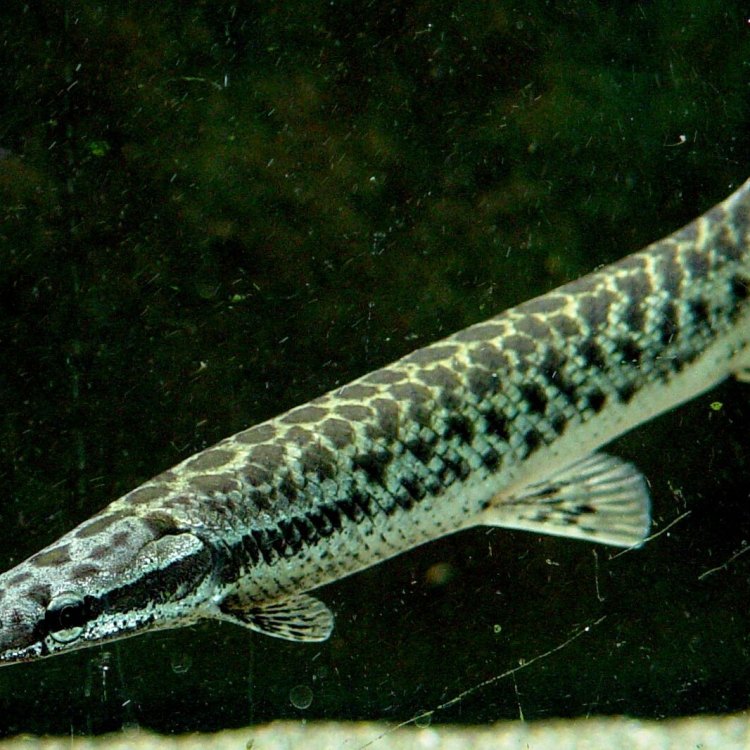
The Elusive and Fascinating Florida Gar: A Master Predator of Southern Waters
Disclaimer: The content provided is for informational purposes only. We cannot guarantee the accuracy of the information on this page 100%. All information provided here may change without prior notice.



